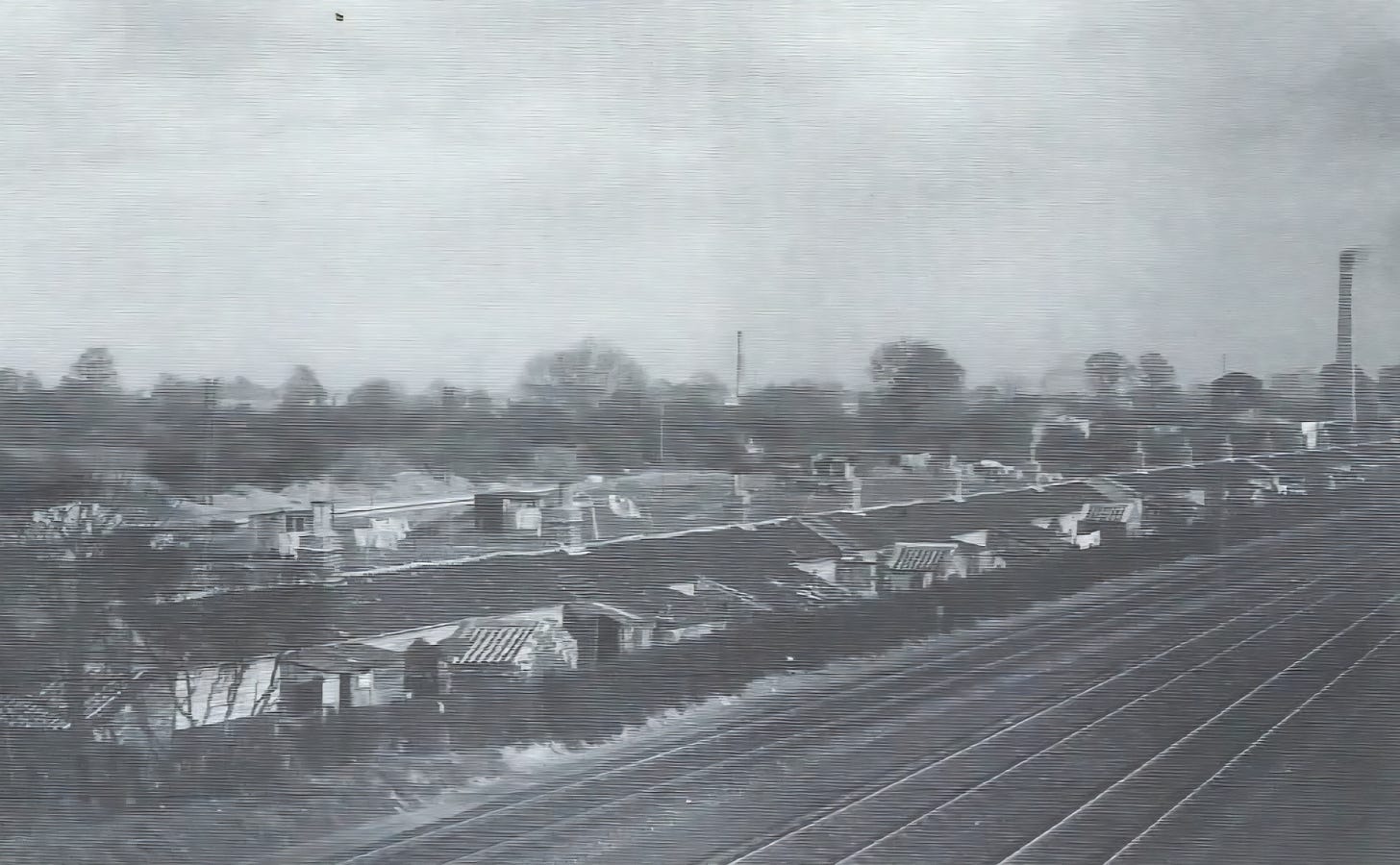The Gateway Ancestor: Excavating Identity Through Genealogical Pilgrimage
Let us begin by unravelling the ties that bind—threads connecting us to ancestral voices echoing through time, drawing us toward the fevered pulse of the Monmouth Rebellion and beyond.
The road to such a gateway - into another world and time - is rarely smooth. It is treacherous, riddled with traps, shaped by twists worthy of any novel: revelations and redactions, highs and lows, all tangled in a relentless dance with the devil of detail. Ancestors may stand in plain sight, cloaked in silence, or scrubbed from memory entirely.
Fires, floods, wars, and centuries of poor recordkeeping have erased generations. Names clash with variant spellings. Dates misalign. Transcription errors multiply. And adoption, secrecy, or informal familial ties slip through the gaps, never formally recorded, yet deeply real.
Much lies buried behind paywalls, within fragmented archives, and among dusty parish ledgers awaiting digitisation. Genealogical truth exists, but it must be unearthed with discernment, critical analysis, and methodical care.
It is tempting to surrender to convenience. Apps and autofill systems can sketch family trees within minutes, tracing back to the 1450s : if luck permits. Yet these platforms, though useful, remain vulnerable to the paradox of "junk in, junk out." An error in one person’s tree can cascade through thousands, distorting legacy and obscuring truth.
The Philosopher’s Question
Ask yourself what are you looking to create?
Is it an accurate, reflective mirror of your lineage? Or a flirtation with convenience and folklore? If a data-fed dockyard doxy satisfies your curiosity, then carry on. But if your aim is substance, precision, and integrity then you must take a different path.
Historical research is no surface-level affair. It requires excavation - deep data mining, sustained internal dialogue, and careful contextualisation. It demands engagement with primary and secondary sources, approached with scholarly rigour. This pursuit is not merely about uncovering names and dates; it is about restoring the contours of forgotten lives and illuminating the worlds they inhabited.
The Living Conduit
In the beginning, there was… you.
You are the trunk that supports the entire tree. All those before you are the branches; all who come after are the roots. You are the living conduit, bridging past and future. Interpreter. Steward. You carry the weight of memory not as burden, but as invitation; to reckon with legacy, reweave the frayed strands of history, and decide which truths to pass on.
You are more than a family curator. You are the Indiana Jones of your lineage - dodging booby traps of misinformation, navigating forgotten crypts of parish ledgers, brushing dust off the bones of history. You are chasing your own Holy Grail: not gold or glory, but the truth that shapes identity and defines legacy, and just like every other grail seeker, the path demands grit, grace, and a refusal to settle for illusion.
Take your time to find your ancestors - they didn’t rush to create you.
Genealogical discovery is not a sprint – it’s a pilgrimage. You are not assembling a chart; you are assembling meaning. With each connection, the fog clears slightly. The past transforms from myth into life.
Give yourself space. Let intuition guide you. Feel the pulse of their stories even when the records falter. Soon, you will build an inner compass refined through discernment, logic, and historical accuracy. It is this compass that will lead you to your gateway ancestor.
The Gateway Ancestor
We all have one. The trick is recognising them. They lurk in the margins, waiting to be discovered.
In my own genealogical journey, I traced five generations before I uncovered Frederick Tipping. His surname had appeared casually in an earlier census entry when his granddaughter, Hilda, aged four, was found boarding with a single woman named Harriet Tipping, aged twenty-nine. Curiously, Hilda’s relationship status was left blank. Meanwhile, her presumed parents were living just over three miles away.
By the 1921 census, Hilda had returned to her parents’ home, her status restored as “daughter.” But the mystery remains: why was four-year-old Hilda not living with her parents in 1911—if, indeed, they were her biological parents?
One possibility is that Hilda was Harriet’s illegitimate daughter, later legally adopted by a married aunt and uncle. Alternatively, she may have been Harriet’s niece, temporarily boarding due to overcrowding. Only Hilda’s birth certificate can provide a definitive answer.
The 1911 census does shed light on the circumstances. Hilda’s presumed father, Alfred, a carter, and her brother, William, a brickfield worker, lived with their family in Starveall—an area of West London notorious for its brickworks and slum tenements. Their dwelling, a makeshift shack of tin and wood, nestled between canal and railway, was part of a stretch locally known as “Rabbit Hutch Row”—a grim testament to Industrialised Edwardian poverty - one room where the entire family lived and slept with an outside communial lavatory.
Photos : Rabbit hutch row, Starvaell, Yiewsley - sandwiched between the canal and the railway circa 1912
Meanwhile, a few miles away, Hilda resided with Harriet, with a family called Sadler. The head of the household was a farm carter, and Harriet herself is listed as an agricultural labourer, strongly suggesting that Hilda was living on a working farm. Too young for formal education, she likely contributed light domestic labour—a pragmatic decision in an era where fewer mouths meant greater survival.
The Twist in the Tale
This tale reads like a bleak Edwardian fable: poverty, hunger, scant education, and unsanitary conditions. Very Oliver Twist. But here lies the twist: in 1911, and possibly for the rest of her life, little Hilda remained unaware that she was both trunk and root of her tree - that she bore the weight of generations that came before her and was descended from nobility through her own grandfather - a lineage she likely never knew.
Photo: Starvaell, Yiewsley brickfield workers
Coming up:
Part Four - Hilda’s Gateway into Another World.






